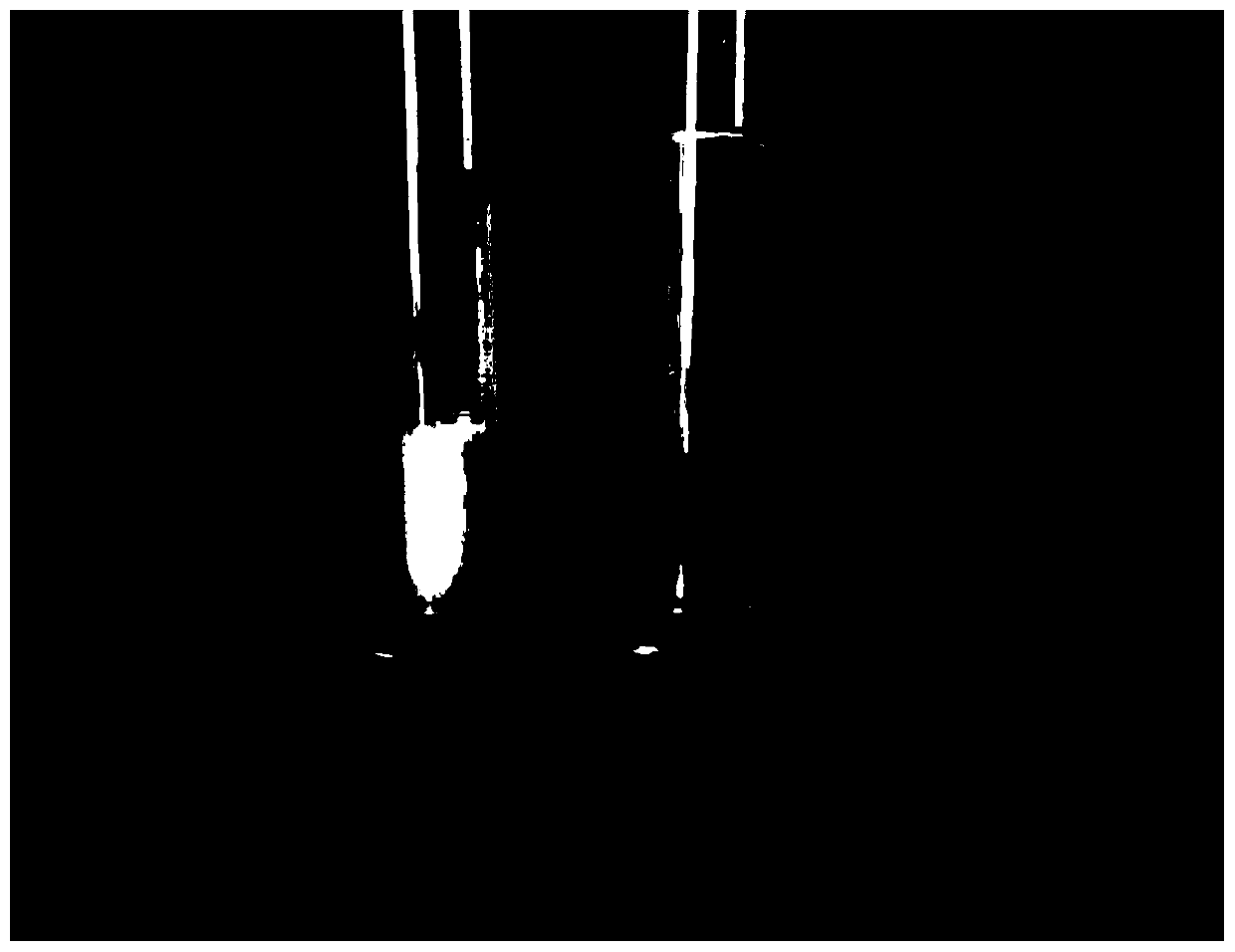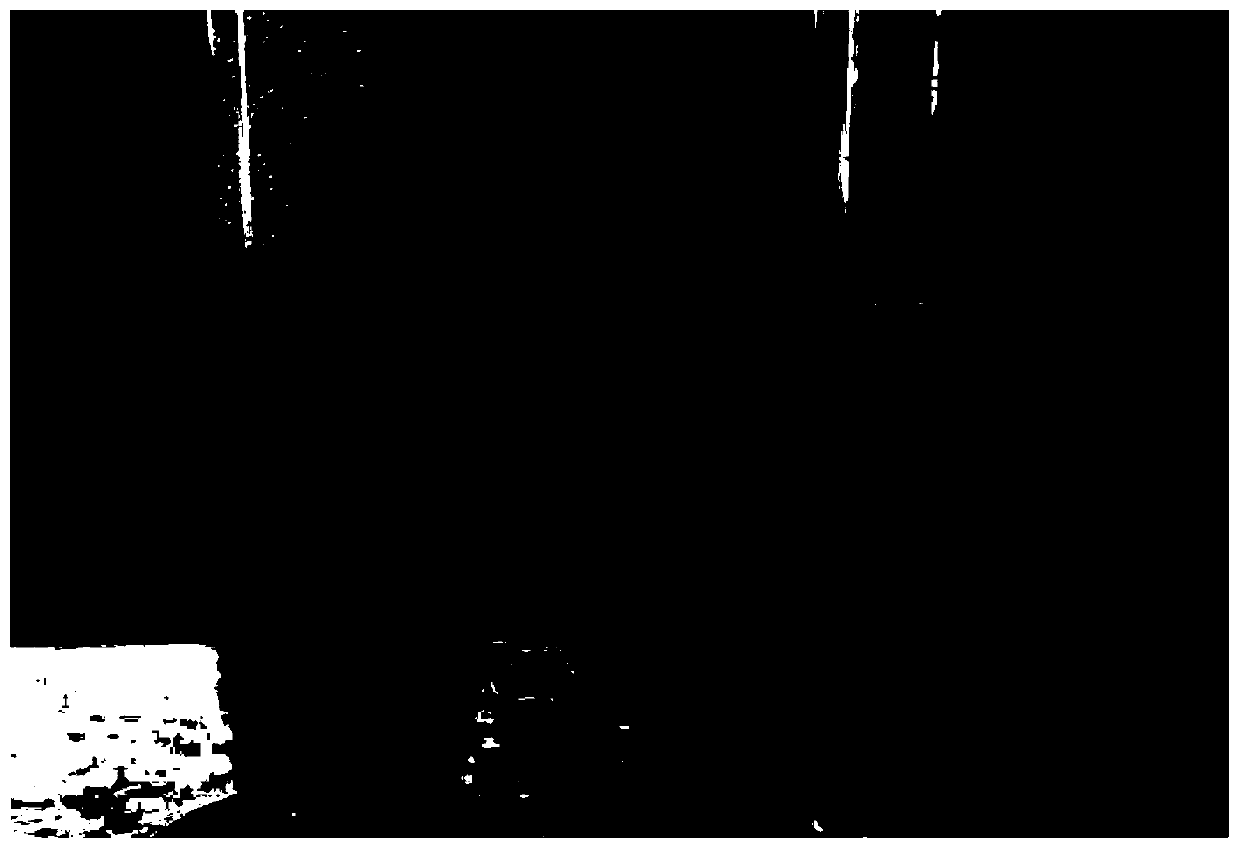Non-ionic light-cured polyurethane aqueous dispersion resin composition with dominant compatibility as well as preparation method and application thereof
A polyurethane water dispersion and resin composition technology, applied in polyurea/polyurethane coatings, coatings, etc., can solve problems such as poor hydrolysis resistance, poor stability, and poor compatibility, and achieve migration avoidance, high stability, and excellent water resistance sexual effect
- Summary
- Abstract
- Description
- Claims
- Application Information
AI Technical Summary
Problems solved by technology
Method used
Image
Examples
Embodiment 1
[0024] 1. Get 18g polycaprolactone diol resin (PCL1000, Japan Daisyro Group), 8g polyether N210 (Jiangsu Haian Petrochemical Plant), 11g isophorone diisocyanate (Germany Bayer), and heat up to 75 ±2°C, stirring for 3 hours;
[0025] 2. Cool down to 55±2°C, add 10g of aminomethoxypolyether (CAM2070), raise the temperature to 75±2°C, and stir for 3 hours;
[0026] 3. Cool down to 55±2°C, add 1.5g of hydroxyacrylate (Jiangsu Chuangteng HPA), 0.02g of dibutyltin dilaurate, raise the temperature to 75±2°C, and stir for 1.5 hours;
[0027] 4. Add 72g of deionized water, stir and emulsify with deionized water, then add 0.2g of Kathon preservative (Kathon, commercially available) and stir at 80±2°C for 2 hours to prepare.
[0028] The finished product is a non-ionic photocurable polyurethane aqueous dispersion resin with a stable and uniform solid content of 40±2% (mass fraction) and excellent compatibility. The emulsion is milky white to translucent and has excellent storage stabili...
Embodiment 2
[0030] 1. Take 23.4g of polytetrahydrofuran diol resin (PCL1000, Daiselo Group of Japan), 10.2g of polyether diol N210, 11g of diisocyanate HDI, heat up to 75±2°C, and stir for 3.5 hours;
[0031] 2. Cool down to 55±2°C, add 11.5g of aminopolyethylene glycol, raise the temperature to 75±2°C, and stir for 2.5 hours;
[0032] 3. Cool down to 55±2°C, add 2.0g of hydroxyacrylate, 0.03g of dibutyltin dilaurate, raise the temperature to 75±2°C, and react for 1.5 hours;
[0033] 4. Add 87g of deionized water, stir and emulsify with deionized water, then add 0.2g of Kathon preservative, stir and keep warm at 80±2°C for 2 hours.
[0034] The finished product is a non-ionic photocurable polyurethane aqueous dispersion resin with a stable and uniform solid content of 40±2% (mass fraction) and superior hydrolysis resistance and compatibility. The emulsion is milky white to translucent and has excellent storage stability.
Embodiment 3
[0036] 1. Take 26g of polycaprolactone diol resin (PCL1000, Japan Daisyro Group), 8g of isophorone diisocyanate, 4.8g of HDI, heat up to 75±2°C, and stir for 3.0 hours;
[0037] 2. Cool down to 55±2°C, add 9.5g of aminopolyethylene glycol, raise the temperature to 75±2°C, and stir for 2 hours;
[0038] 3. Cool down to 55±2°C, add 1.8 parts of hydroxyacrylate, 0.03g of dibutyltin dilaurate, raise the temperature to 75±2°C, and stir for 2.5 hours;
[0039] 4. Add 75g of deionized water, stir and emulsify with deionized water, then add 0.2g of Casson preservative, stir and keep warm at 80±2°C for 2 hours.
[0040] The finished product is a non-ionic photocurable polyurethane aqueous dispersion resin with a stable and uniform solid content of 40±2% (mass fraction) and excellent compatibility. The emulsion is milky white to translucent and has excellent storage stability.
[0041] The non-ionic UV-curable polyurethane aqueous dispersion resin composition with superior compatibilit...
PUM
 Login to View More
Login to View More Abstract
Description
Claims
Application Information
 Login to View More
Login to View More - R&D Engineer
- R&D Manager
- IP Professional
- Industry Leading Data Capabilities
- Powerful AI technology
- Patent DNA Extraction
Browse by: Latest US Patents, China's latest patents, Technical Efficacy Thesaurus, Application Domain, Technology Topic, Popular Technical Reports.
© 2024 PatSnap. All rights reserved.Legal|Privacy policy|Modern Slavery Act Transparency Statement|Sitemap|About US| Contact US: help@patsnap.com










